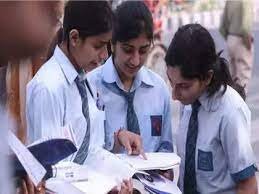According to a recent analysis conducted by the Ministry of Education (MoE), it has been found that approximately 35 lakh students who were enrolled in Class 10 during the academic year 2021-2022 did not progress to Class 11. Among these students, 27.5 lakh failed their exams, while 7.5 lakh students did not even appear for the Class 10 examinations.
The analysis revealed a stark difference in the failure rates between students from Central Boards, such as the Central Board of Secondary Education (CBSE) and the Council for the Indian School Certificate Examinations (CISCE), and those from State Boards. While the failure rate for students in Central Boards stood at a mere 5%, it could go as high as 16% for students in State Boards.
The significant number of students who did not progress to Class 11 raises concerns about the educational system and the factors contributing to such outcomes. The education ministry is likely to delve deeper into understanding the reasons behind this situation and develop strategies to address it effectively.
One possible explanation for the high failure rate in State Boards could be the variations in the quality of education and evaluation standards across different states. Each state in India has its own education board responsible for conducting examinations and setting academic standards. These variations can lead to discrepancies in the level of preparation and evaluation, resulting in a higher failure rate.
Another factor that might contribute to the high failure rate is the lack of access to quality education and resources in certain regions, particularly in rural areas. Limited infrastructure, inadequate teaching staff, and a lack of educational materials can hinder students’ ability to perform well in exams and progress to higher levels of education.
Moreover, the ongoing COVID-19 pandemic has severely disrupted the education sector, leading to school closures, online learning challenges, and significant disruptions in the academic calendar. These disruptions have likely impacted students’ learning outcomes, especially for those who lack access to digital resources and face difficulties in adapting to online learning environments.
To address these issues, it is crucial for the Ministry of Education and relevant stakeholders to take proactive measures. These measures could include strengthening the evaluation standards across all education boards, providing additional support and resources to students in disadvantaged regions, and enhancing the quality of teaching staff through training and professional development programs.
Furthermore, it is imperative to focus on improving access to quality education, particularly in rural areas, by investing in infrastructure development, ensuring availability of educational materials, and bridging the digital divide. Additionally, targeted interventions and remedial programs can help struggling students catch up and succeed academically.
The findings of this analysis should serve as a wake-up call for policymakers, educators, and parents to collectively work towards reducing the number of students who do not progress to higher levels of education. By addressing the underlying issues and implementing effective reforms, it is possible to create a more inclusive and equitable education system that empowers all students to succeed and realize their full potential.


